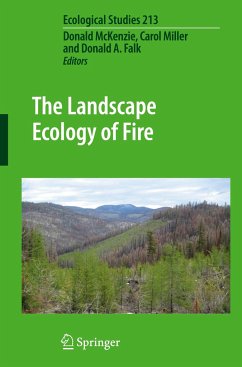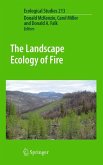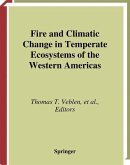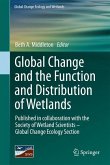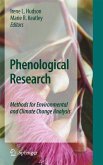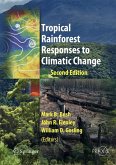Wildfires are likely to become more extensive and more severe with global warming. This book explores the effects of altered fire regimes on landscape, dominant species, plants, animals and human communities. The discussion includes fire management policies.
Global warming is expected to change fire regimes, likely increasing the severity and extent of wildfires in many ecosystems around the world. What will be the landscape-scale effects of these altered fire regimes? Within what theoretical contexts can we accurately assess these effects? We explore the possible effects of altered fire regimes on landscape patch dynamics, dominant species (tree, shrub, or herbaceous) and succession, sensitive and invasive plant and animal species and communities, and ecosystem function. Ultimately, we must consider the human dimension: what are the policy and management implications of increased fire disturbance, and what are the implications for human communities?
Global warming is expected to change fire regimes, likely increasing the severity and extent of wildfires in many ecosystems around the world. What will be the landscape-scale effects of these altered fire regimes? Within what theoretical contexts can we accurately assess these effects? We explore the possible effects of altered fire regimes on landscape patch dynamics, dominant species (tree, shrub, or herbaceous) and succession, sensitive and invasive plant and animal species and communities, and ecosystem function. Ultimately, we must consider the human dimension: what are the policy and management implications of increased fire disturbance, and what are the implications for human communities?
From the reviews:
"This work represents the state of the art in North American landscape fire ecology. Integrating geospatial technologies with landscape ecology, the book presents the advanced student, practitioner, or researcher of fire management, landscape ecology, and climate change with conceptual frameworks, theory, and examples of data-driven analyses in multiple regions. ... Valuable as a reference for land managers of fire-dependent ecosystems, and as a point of departure for graduate research. Summing Up: Highly recommended. Upper-division undergraduate through professional readership." (E. J. Delaney, Choice, Vol. 48 (11), August, 2011)
"This volume addresses several emerging ideas regarding the landscape ecology of fire, consisting of 12 collected chapters. ... it aims to advance certain emerging subfields and theories that are less covered in other publications. In this way much of the work is quite interesting and useful ... . this volume complements other fireecology works well and ultimately achieves its objective of advancing thought on some promising new landscape disturbance theories and key contemporary topics." (Daniel C. Donato, The Quarterly Review of Biology, Vol. 88 (1), March, 2013)
"This work represents the state of the art in North American landscape fire ecology. Integrating geospatial technologies with landscape ecology, the book presents the advanced student, practitioner, or researcher of fire management, landscape ecology, and climate change with conceptual frameworks, theory, and examples of data-driven analyses in multiple regions. ... Valuable as a reference for land managers of fire-dependent ecosystems, and as a point of departure for graduate research. Summing Up: Highly recommended. Upper-division undergraduate through professional readership." (E. J. Delaney, Choice, Vol. 48 (11), August, 2011)
"This volume addresses several emerging ideas regarding the landscape ecology of fire, consisting of 12 collected chapters. ... it aims to advance certain emerging subfields and theories that are less covered in other publications. In this way much of the work is quite interesting and useful ... . this volume complements other fireecology works well and ultimately achieves its objective of advancing thought on some promising new landscape disturbance theories and key contemporary topics." (Daniel C. Donato, The Quarterly Review of Biology, Vol. 88 (1), March, 2013)

